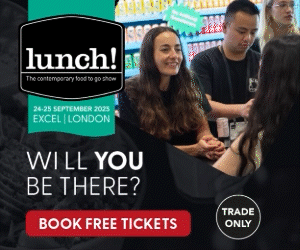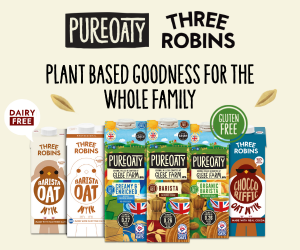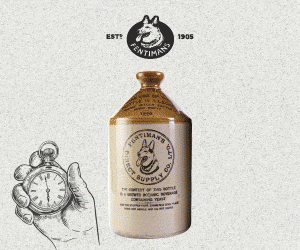insight: the power of storytelling
Karen Fewell shares how to use storytelling to market your food and drink during the economic crisis

A number of attendees at the Garden Centre Catering Forum have been in touch to say how useful they found the session and so I thought it would be helpful to share some of the advice here.
Stories have been all around us for years, think about stories told from one person to another or even cave wall paintings, which are probably the earliest examples of storytelling through pictures. Using stories in your marketing is an effective way of sharing information, but why are they so powerful?
Stories are everywhere
During my talk at the Garden Centre Catering Forum, I showed the audience the Heider and Simmel illusion, which is a genuine experiment from the 1940s. In the experiment, participants were asked to watch a short film and then describe what they saw happening.
In simple terms, the film is an animation of geometric shapes moving around the screen. However, nearly everyone who watched the animation during the experiment, when asked to describe it, came up with a fairly detailed ‘story’ of what happens in the film. Participants responded with narratives of the three shapes as characters with human like goals, emotions, and social relationships.
The experiment by Heider and Simmel (1944) revealed that humans have a strong tendency to impose narrative on situations. We are hardwired to find meaning and order in our lives through storytelling.
The reality is that stories are everywhere and as Jeremy Hsu of Princeton University said, “Personal stories make up 65% of our conversations.”
Stories amid the cost-of-living crisis
In keeping with the theme, I will share my thoughts on telling brand stories during the current economic crisis with a little story. A few weeks back on a not-so-fun Thursday evening, my husband and I sat on the sofa and debated how we were going to save money during the winter months. We considered all the sensible things like our energy plan, jumpers versus turning up the heating and remembering to switch things off when we are not using them. Then we started chatting about the fun things in our life and with disappointment accepted that there wouldn’t be a holiday in the near future, and that we should have a few months with no eating out. So the decision was made.
The following morning I was on Instagram, the other half was on Facebook and we both spotted a ‘dining in the dark’ dinner at a nearby five-star hotel to raise money for The Guide Dogs for the Blind Association. Almost at exactly the same time we said to each other, “Shall we book this?”
What had happened? It was only 12 hours earlier that we put our plan to save money into place. Well, we had both emotionally bought into the story that the hotel was sharing. We wanted the experience and made an emotional decision that we wanted to go.
According to Harvard professor Gerald Zaltman, 95% of purchasing decisions are subconscious, and for us it was the emotional part of our brain responding to the story that the hotel told. The rational part of our brains then tried to come up with good reason as to why it was okay to spend the money as we said things like, “It will be a really good experience”, and “Well it is for charity”.
Stories are memorable
It is reported that a well-told story that is personal and emotionally compelling engages more of the brain than when sharing a set of facts alone. Both Jennifer Aaker, professor of marketing at Stanford University, and psychologist Jerome Bruner have shared that we are 22 times more likely to remember a fact when it has been wrapped in a story. In a study by Stanford Graduate School of Business they found that when people listened to pitches, either containing facts and figures or a story, only 5% recalled a statistic, yet 63% remembered the stories. If you want to be remembered then you should start to learn how to craft brilliant marketing stories.

Stories drive people to act
The moment the penny dropped for me about the importance of storytelling was when I heard a speaker liken stories to a parachute. Just like a parachute, the mind has to be open to work, and stories are a wonderful way of opening the mind to new ideas.
To quote Hsu: “The way stories work is that they light up the emotional part of our brain, and it is the emotional part of our brain that inspires us to act – not the rational.”
What should you do?
Over the coming months, it is only natural that customers will question how they spend their money. However, the answer to how you keep customers spending with you is about so much more than offering the lowest price. Remember they are more likely to be making emotional decisions than rational ones. Customers who have disposable income are looking for value ,and that is not necessarily the cheapest deal around. Offer value through experience and storytelling. This is the time to really sharpen your overall brand story and to gather stories from your business to use in your marketing.
Author
Karen is a marketer and consumer psychologist specialising in the food, drink and hospitality sectors and has more than 20 years’ marketing experience. She runs a successful marketing consultancy, Digital Blonde, using insights into consumer behaviour to help drive business in a changing market.
If anyone would like any help with brand storytelling then please do get in touch. [email protected]














